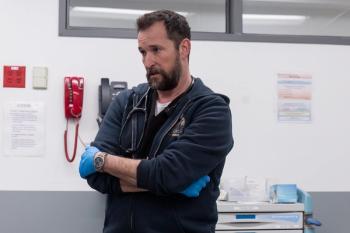
How athenahealth is placing a greater focus on the patient experience

The Massachusetts healthcare technology company has introduced new tools aimed at patients and measuring their satisfaction. Paul Brient of athenahealth talked with Chief Healthcare Executive about engaging patients.
Even though athenahealth is a healthcare technology company, Paul Brient says until recently, the firm hasn’t focused enough on the patient experience.
While athenahealth provides electronic health records, software and other services for health systems and hospitals, the Massachusetts-based company has been introducing new tools aimed at the patient experience.
Brient, athenahealth’s executive vice president and chief product officer, says the new offerings reflect the company’s focus on patients.
In March, athenahealth introduced its first app aimed at patients, called “athenaPatient.” “It’s a little bit late in the scheme of the overall market, but it has gotten tremendous reception,” Brient says. “From our patient community, we’ve had over a quarter of a million downloads in the first few weeks.”
This month, athenahealth unveiled its “Patient Digital Engagement Index,” a tool that is designed to help medical practices see how patients are using digital tools to receive healthcare. The company says the index can help improve providers’ services and help patients get better care.
In an interview at the HIMSS Global Health Conference & Exhibition, Brient talked with Chief Healthcare Executive® about athenahealth’s focus on patients and the need to help patients engage with healthcare providers more easily.
As he says, “I've spent my whole life in healthcare, and I have a hard time using the healthcare system.” If it’s difficult for a healthcare leader, Brient says, it’s got to be immensely frustrating and perplexing for many patients.
(See part of our conversation with Paul Brient of athenahealth in this video. The story continues below.)
‘All about the experience’
Brient joined athenahealth in 2019. He had previously been the CEO of PatientKeeper, a firm that developed digital solutions for healthcare providers.
“One of the things that seemed odd to me when I joined athenahealth was that we didn't have a big focus on patients,” Brient says.
Now, Brient is overseeing a team that is focused on improving the patient experience.
“We have a dedicated group of people that are focused just on trying to figure out how to help patients better engage with their providers and healthcare system,” Brient says.
While Brient says athenahealth was behind competitors in developing its app for patients, he touts the app’s ability to help patients in easily scheduling appointments.
The company has received “tremendously positive feedback from the patient community as they've adopted the app and have moved away from using web pages or the phone to a proper native application,” Brient says.
With athenahealths’s Patient Digital Engagement Index, providers can gain new insights into how often their patients are using electronic tools for scheduling and payments. Available under the athenaOne® Insights Dashboard, the Index allows practices to compare themselves against other organizations on athenahealth’s network and learn new ways to engage with patients.
Brient says athenahealth is working hard to understand what drives patient satisfaction.
When talking with providers about high quality healthcare, they typically focus on techniques, procedures and outcomes, Brient says. While patients certainly expect good outcomes from their physicians or hospitals, he says the quality of healthcare isn’t always the first thing they mention.
“You talk to patients, it's all about the experience,” Brient says. “Was it easy to get an appointment? Did I have to wait a long time? Are they nice to me? Do they care? Do they spend extra time with me?”
Patients expect top-notch care, but they need convenience and compassion, Brient says.
“We're really working hard to help our clients understand that, and make both great,” he says.
‘All patients are not the same’
While many patients want the ease of scheduling an appointment online at any given time, some patients are still going to need a human touch. Brient says it’s important to balance self-scheduling digital options with good service for patients who want to speak to a human being.
Some patients, especially those who are ill, less technically inclined, or simply lonely, are going to want to talk to a person.
But if health systems can offer easy options, via apps or website, for those who want digital services, Brient says it will take some of the load off staff so they can spend more time engaging with patients, answering questions and addressing their concerns.
If health systems want to improve the patient experience, Brient says they should interview patients and get a sense of what they need and what they may be missing.
It’s also critical to understand that patients have different needs.
“All patients are not the same,” Brient says. “And the more you tailor your offerings to meet the needs of different patients, I think the better off and the more easily accessible patients will find your health system.”
While focusing on the patients, athenahealth is trying to make electronic health records “work the way that the clinician thinks.”
The company is aiming to make the EHR “context aware” to understand why the patient is seeing the physician. Brient says they are working to ensure clinicians can easily see relevant information for that patient encounter.
Brient says the goal is to “make it as easy and as fast as possible to get through the EMR and the ordering process, so they can spend most of the time focusing on the patient.”





























































































